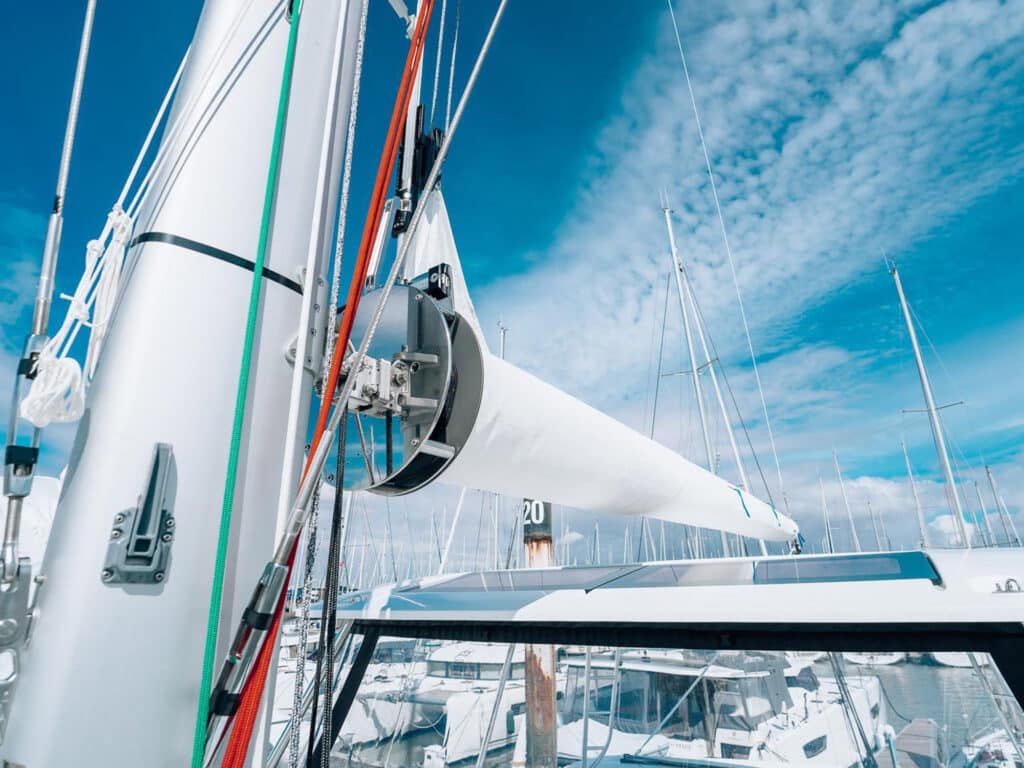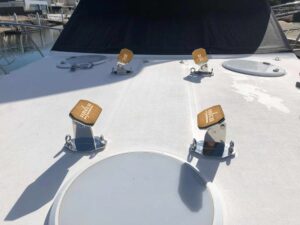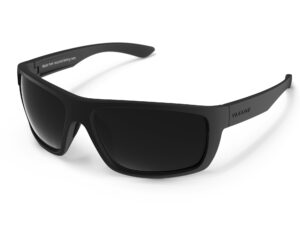
Lagoon Catamarans has unveiled a furling boom system that’s been in development for a dozen years. It’s available starting this month as a factory option on the Lagoon 51 and the Lagoon 46.
“We did the first set of prototypes, which failed,” says Bruno Belmont, Lagoon’s multihull expert. “So, we restarted five and a half years ago with fresh ideas, and we started building efficient prototypes three years ago.”
Those newer prototypes have been undergoing field tests ever since. Lagoon worked alongside Sparcraft, which makes masts and rigging; Incidences Sails, which has been in business for more than 30 years; and Facnor, which specializes in furling systems.
“The furling system could not be a copy of a monohull system because of the horizontal compression of the batons,” Bruno says, adding that Lagoon ultimately created a system that is not enclosed within cowling. “We wanted the sailor to look at what they’re doing and be capable of reacting in case something went wrong.”
Overall, he adds, the idea is to simplify and improve the sailing experience, especially for people who are newcomers to boating and still getting used to all the skillsets that are required.
“Most of our sailors are first-boat buyers, so they don’t have a strong experience of sailing,” he says. “The idea is that the boom is quite high, and accessing the lazy bag could be viewed as difficult. Also, reefing the main can be quite challenging for new sailors.”
The Lagoon Furling System relies on four key principles: completely easing the mainsheet so the sail and boom can move freely; having the boat positioned head to wind, to keep the boom close to the vessel’s centerline; hoisting the topping lift to a point where it’s locked in the predetermined position so that the boom is level; and applying tension to the slack easing line to ensure that the luff of the sail remains tight.
Key components include a stainless-steel furling mandrel, a rotating boom with pivot bearings at the front and rear, a stainless-steel aft bearing unit, and a steel-wire topping lift to limit stretching.
See the Lagoon Furling System in action:
Lagoon also notes that the sail is not enclosed in a carbon-fiber or fiberglass casing, as some other furling systems are. With the Lagoon system, sailors have a clear view of the operation. Three lines—the main halyard, furling line and topping lift—control the furling mechanism.








